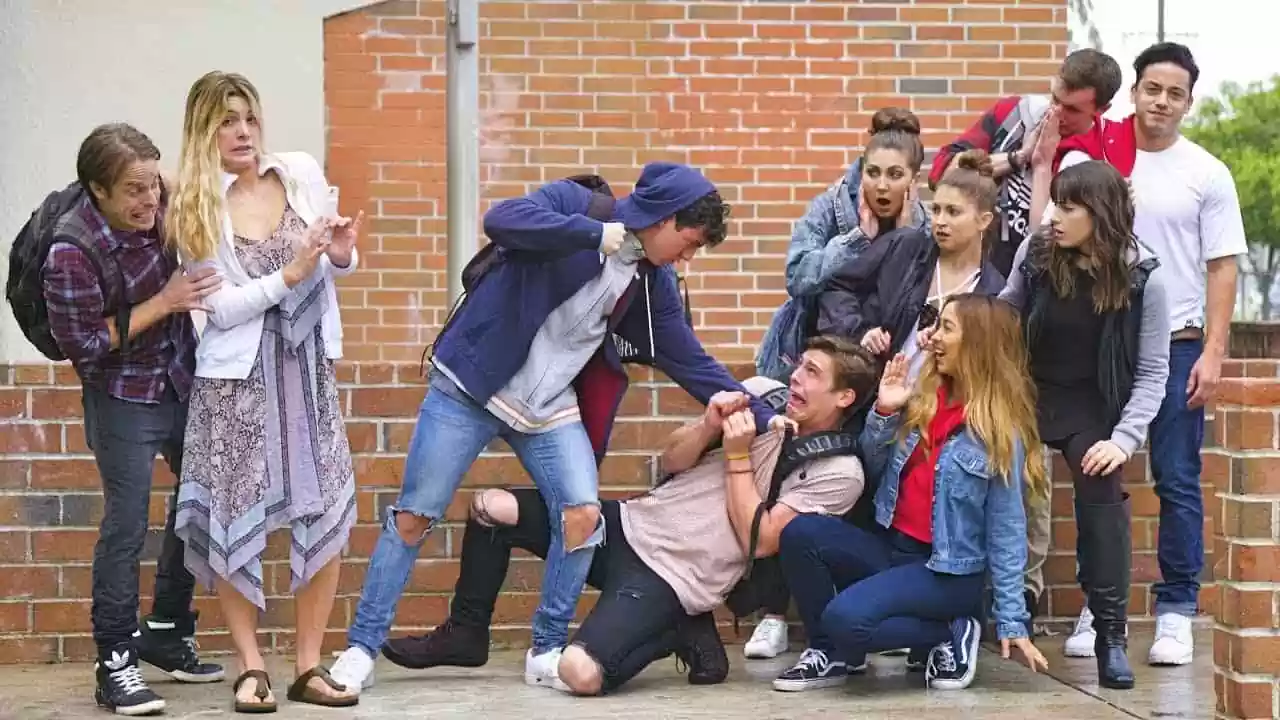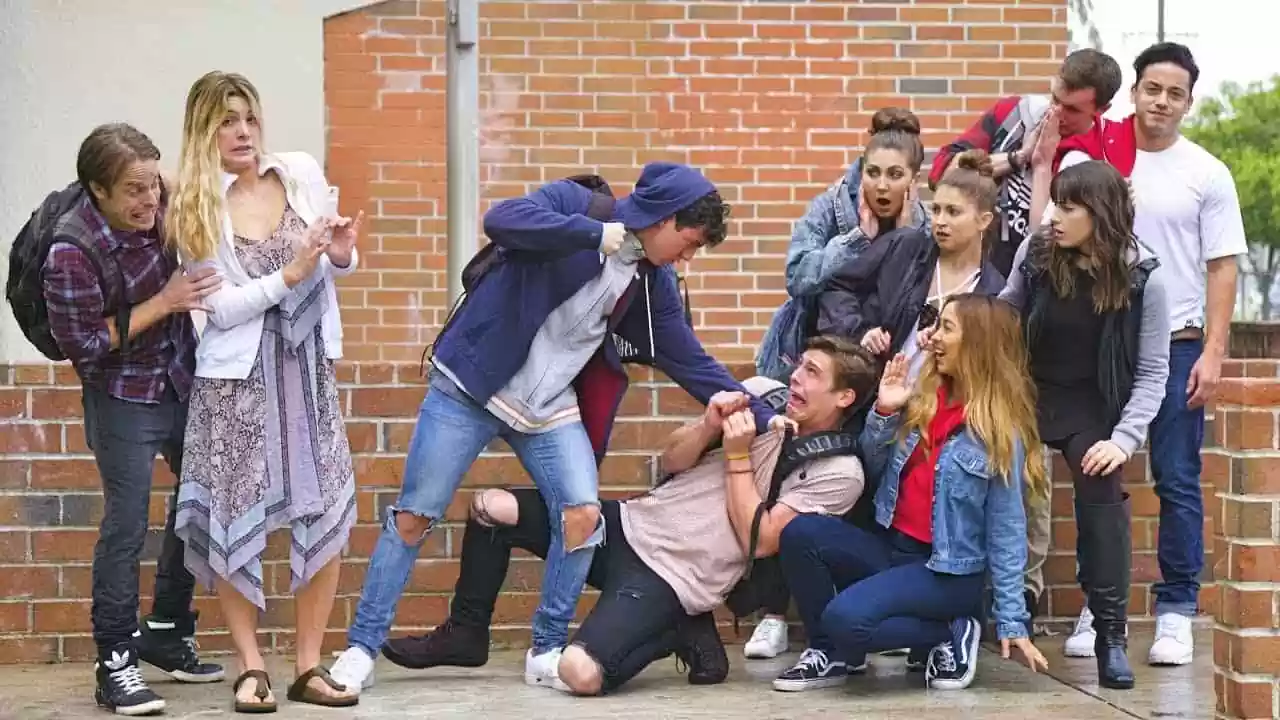Last updated on April 19th, 2024 at 08:36 am
Although bullying in high school has been around for a long time, it has taken on a new, digital form in the last few years. With the rise of social media sites, students now have to deal with a whole new set of problems. It is crazy how much bullying has changed in high school, and it is time to deal with this serious problem head-on.
This piece will cover a lot of ground about the bad side of bullying in high schools, with a focus on how it happens on social media. We will talk about the mental damage it does to victims, the platforms that make it possible, and ways to stop this modern threat. So, buckle up, because we are going to take a look at the complicated world of high school intimidation in the age of social media.

The Digital Playground: A New Frontier
High school has long been associated with awkward teenage years, self-discovery, and the trials and tribulations of growing up. While bullying has been a part of this landscape for generations, the rise of social media has made it more pervasive and insidious. High school students today experience bullying not just within the school’s walls but also on the screens they hold in their hands.
- The Lure of Social Media
Social media, with its promise of connection and communication, has become an integral part of teenagers’ lives. It’s a place where they forge their digital identities, express themselves, and interact with peers. However, this virtual realm isn’t immune to the darkness that sometimes lurks in the real world. Bullying in high school often starts on social media because of how appealing it seems.
- Anonymity and Empowerment
One of the key reasons why social media has become a breeding ground for high school bullying is the veil of anonymity it provides. Bullies can hide behind screens and pseudonyms, emboldened by the lack of direct consequences for their actions. The digital realm empowers them to say things they might not dare to in person, making it easier to target and torment their victims.
The Emotional Turmoil of Victims
Now, let’s dive into the emotional turmoil experienced by high school students who find themselves caught in the web of online bullying.
- Isolation and Loneliness
High school is challenging enough without the added weight of online bullying. Victims often find themselves feeling isolated, as if they’re fighting an invisible battle. The emotional pain is compounded by the sense of loneliness that comes from being targeted in the very place they seek social connection.
- Anxiety and Depression
The psychological toll of high school bullying on social media is undeniable. Victims often experience heightened levels of anxiety and depression, leading to decreased self-esteem and self-worth. The constant barrage of hurtful messages and the fear of what might come next can erode one’s mental health over time.
- Self-Doubt and Self-Blame
Many victims of online bullying internalize the cruel words and actions directed at them. They begin to doubt themselves, their worth, and their abilities. This self-doubt and self-blame can lead to long-lasting scars that affect their self-confidence and future relationships.
The Role of Social Media Platforms
High school bullying on social media is not a spontaneous phenomenon; it thrives because of the platforms that host it. Let’s examine the role of social media platforms in facilitating and, sometimes inadvertently, perpetuating this issue.
- Public vs. Private
Social media platforms offer a range of privacy settings, allowing users to control who can see their content. However, this duality can be a double-edged sword. Public posts are open to anyone, making them more susceptible to bullying, while private groups can serve as echo chambers where bullies reinforce each other’s harmful behavior.
- Reporting Mechanisms
Most social media platforms have reporting mechanisms in place, where users can flag abusive content. However, the effectiveness of these mechanisms varies, and many victims find them to be inadequate or slow to respond. Improving these systems is crucial to combat bullying in high schools.
- Virality and Amplification
Social media’s viral nature means that bullying incidents can quickly gain traction and reach a broader audience. The rapid spread of hurtful comments, images, or videos can escalate the emotional damage inflicted on victims. This rapid amplification is a unique challenge that social media brings to bullying in high schools.

Combatting High School Bullying in the Digital Age
Even though cyberbullying in high school is a complicated issue, there are ways to deal with it in a successful way.
- Education and Awareness
Prevention starts with education. High schools and parents should teach students about responsible online behavior, the consequences of cyberbullying, and the importance of empathy. Awareness campaigns can help students recognize the signs of bullying and report it promptly.
- Empowerment and Support
Victims need to know they’re not alone and that support is available. Schools and communities should foster an environment where students feel safe reporting incidents. Support groups, counselors, and helplines can provide the emotional support necessary for victims to heal.
- Stricter Policies and Legal Consequences
Social media platforms must enforce stricter policies against cyberbullying, hate speech, and harassment. Legal consequences for perpetrators should be clear and enforced, deterring potential bullies from engaging in harmful behavior.
- Parental Involvement
Parents play a crucial role in combatting high school bullying on social media. They should be actively involved in their child’s digital life, discussing online experiences and teaching responsible use of social media.
- Digital Detox
Encouraging students to take regular breaks from social media can reduce the constant exposure to bullying. Building a healthy relationship with technology and teaching moderation is essential.
Conclusion
Social media bullying at the high school level is a serious problem that has an impact on many kids’ emotional health. Bullies have new ways to hurt others in the digital age, and we need to do something to protect our kids.
As we come to the end of our look at how social media affects bullying in high schools, remember that the best way to stop this problem is to understand how it hurts the victims. Our tools to fight online bullying are education, support, and tighter rules, and we must use them with care and understanding.
We should work toward a time when there is no fear on the digital playground and high school students can learn, grow, and engage without having to worry about being bullied. We can make it happen if we work together.

